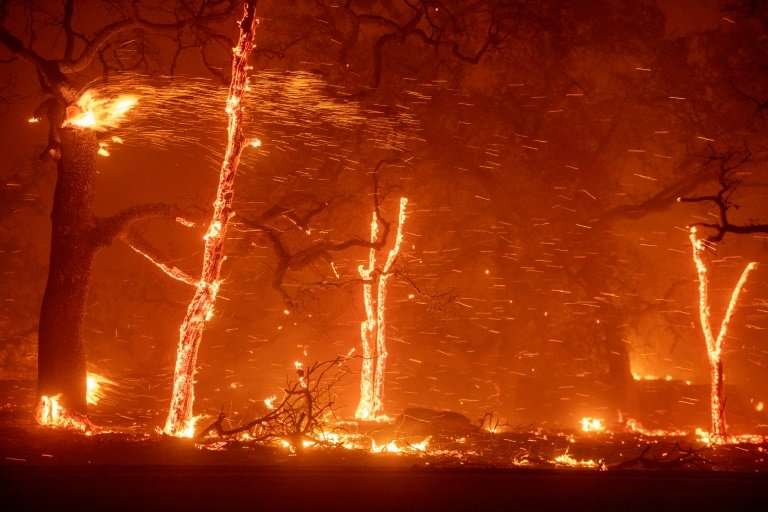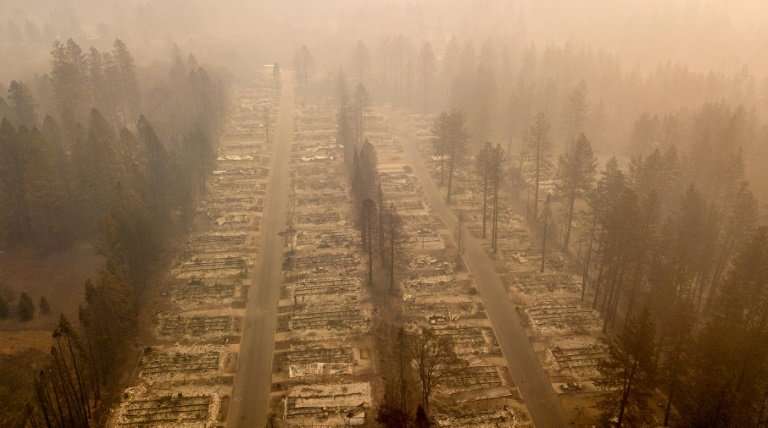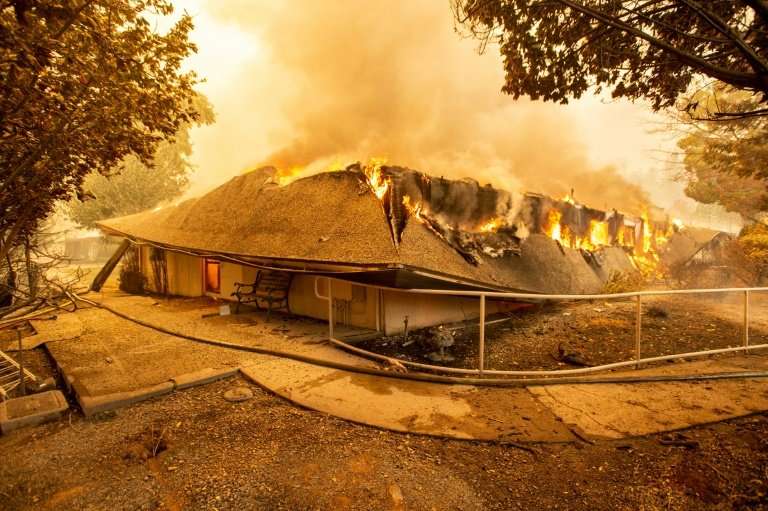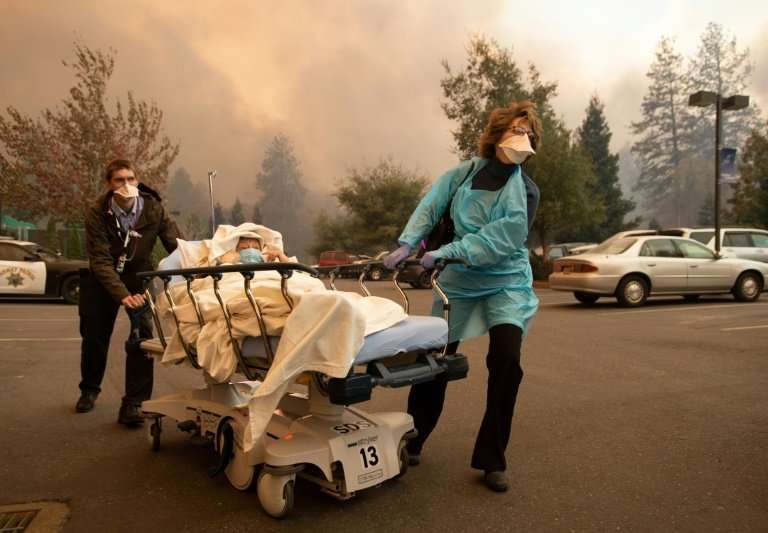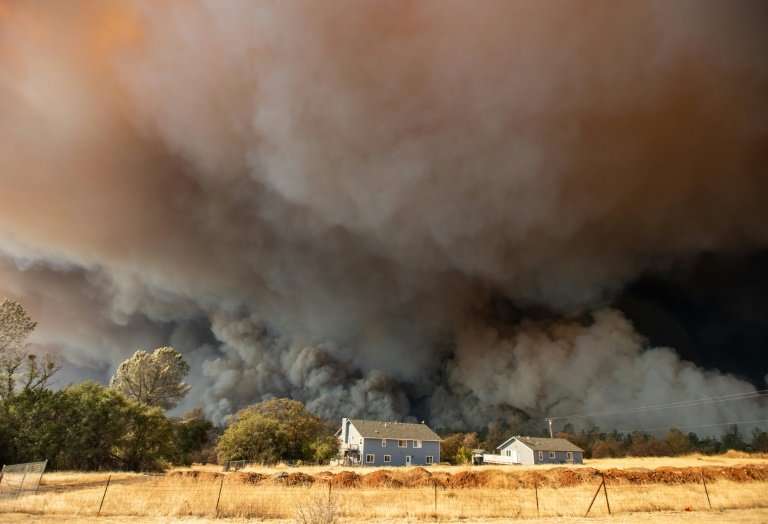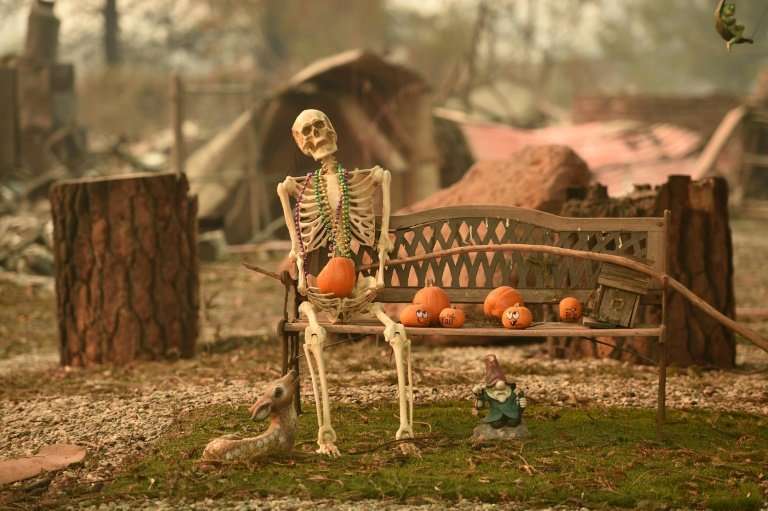Embers fly as wind and flames from the Camp fire tear through Paradise, California on November 8, 2018.
Last year, when huge fires ripped through northern California, people thought it was a one-off. We'd had a mega fire and would now go back to the regular wildfires that have been part of life in California for decades. And then Camp Fire came along.
The numbers say it all. More than 10,000 homes burned to the ground. Nearly 80 people dead and around 700 still unaccounted for. It's by far the deadliest fire in California's history. It's just extraordinary.
The morning it broke out on November 8, I immediately knew it was big, with a colleague texting me before I had woken.
There were more than 1,000 acres (400 hectares) on fire in a wooded area—read fuel—with low humidity and winds of over 50 miles (80 kilometers) per hour. Conditions were pretty much the same as during last year's infernos. There wasn't much firefighters could do.
By the time I reached Paradise, a three-hour drive north of San Francisco in the foothills of the Sierra Nevada Mountains, the fire was in full force.
One of the first things I saw was a hospital on fire. Patients were being evacuated into vans. They can't even safeguard an urban center, I thought. This is serious.
A burned neighborhood in Paradise, California, November 15, 2018
Wall of fire
At one point, I was at an intersection where buildings on every corner were on fire. There were those 50 mile-per-hour wind bursts, so you went from having a clear view to being unable to see a hand in front of you.
I took a few shots from the car and debated whether to get out to take some more. Then a 10-foot-wide (about three meters) fire whirl came at me.
A fire whirl is basically a large dust devil, like you see in deserts. Except instead of dust, it's filled with embers.
The Feather River Hospital burns down during the Camp fire in Paradise, California on November 8, 2018
I'm okay with embers because I wear the same protective gear as firefighters, but whirls are very rare and unpredictable.
I switched into reverse and as I was backing out, a bunch of power lines fell right in front of my car. There were similar scenes all over town.
House after house, business after business was engulfed in flames. KFC, McDonald's, a Safeway supermarket.
There was a shopping center, with a huge parking lot. Usually, parking lots provide protection—there is nothing to burn. Not this time as flames ate through building after building. By the next morning, I would say 90 percent of the area had burned down.
Patients are quickly evacuated from the Feather River Hospital as it burns down during the Camp fire in Paradise, California on November 8, 2018
One of the things that made this fire so lethal is that it broke out in a mountainous area where roads are narrow so people fleeing got snarled in jams.
If there is fire on the side of a road and there is no wind, you can drive through it. But when you've got 50-60 mile-per-hour winds, the flames dance across the tarmac and you can't drive through without your vehicle catching fire.
Frozen in fear
There are two parts to wildfire coverage—the fire and the aftermath. It was the aftermath that really hit me.
A home is overshadowed by towering smoke plumes as the Camp fire races through town in Paradise, California on November 8, 2018
At one point, we were at house which had been destroyed as rescuers lifted up a metal roof that had collapsed on top of someone. The body was completely burned although I think it was a woman. The eyes were open and the fear on her face was just frozen.
I put my camera down and my hands were shaking as I suddenly felt her fear. I didn't file the pictures out of respect for her family.
It never ceases to amaze me what a fire will melt. Glass. License plates.
What remains is interesting too. I came across a patch of grass in front of a fire-gutted home with a bench, a skeleton and pumpkins in the middle. A Halloween decoration. The skeleton's head was cocked to the side. It was eerie.
A halloween decoration remains at a burned home after the Camp fire tore through the region in Paradise, California on November 12, 2018
If something happens once, it could be a fluke. If it happens twice, it could be the start of a pattern. We've had mega fires twice in two years now.
The general consensus in my circles is this is the start of a pattern of mega fires. It's so much bigger than we've seen before, and unfortunately, we can probably expect this to happen again.
© 2018 AFP
